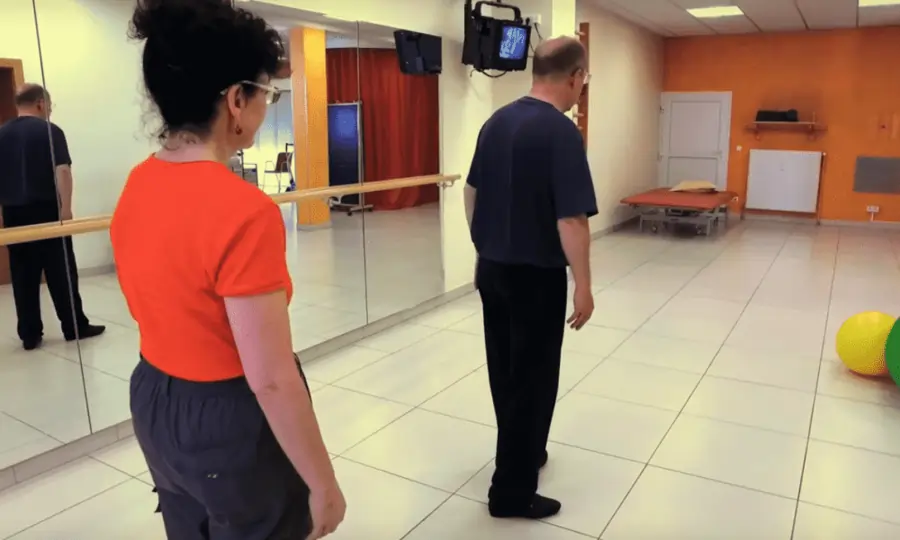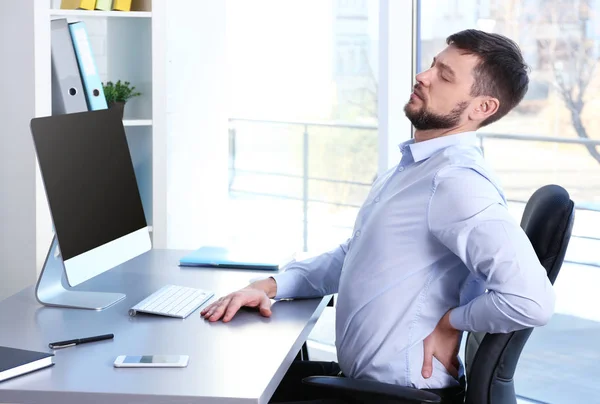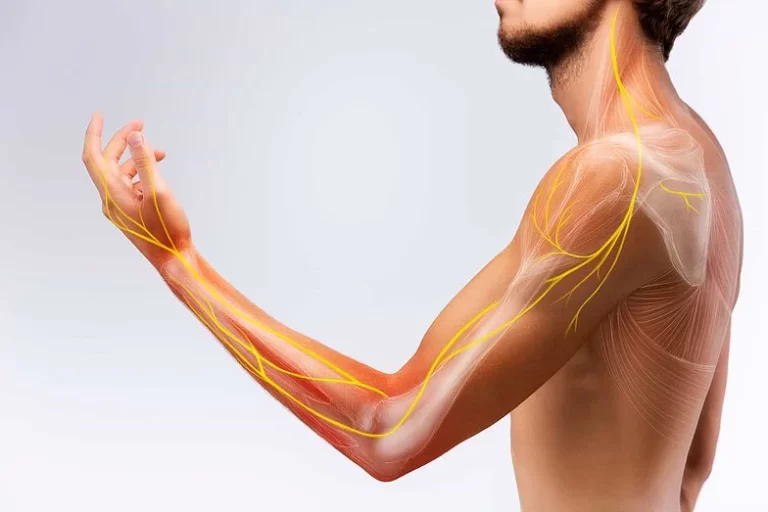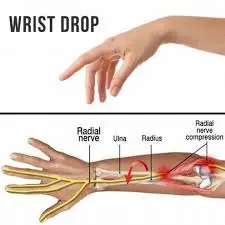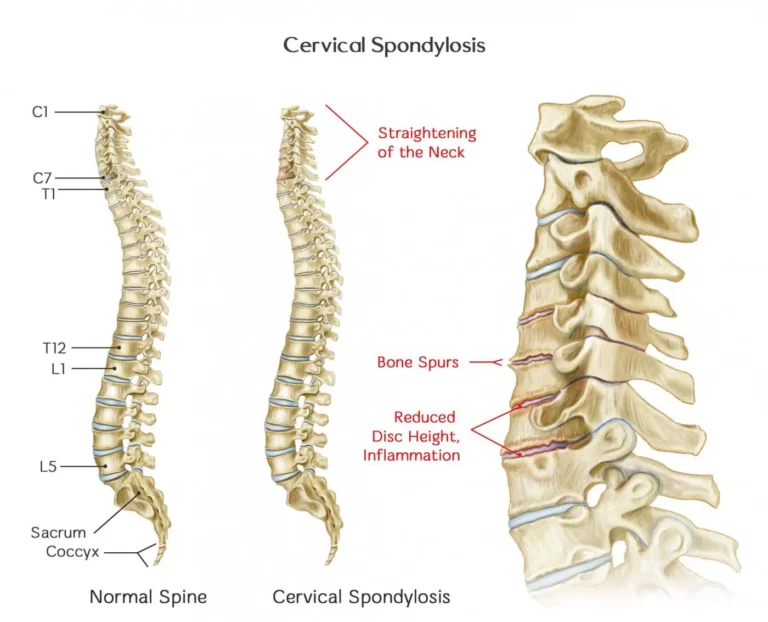Parkinsonian Gait
Our walking pattern is referred to as our gait. Our bodies are normally upright, not falling forward or backward, with arms swinging to the sides and an even stride. Our center of gravity is stabilized when we stand up straight, which helps us to keep our balance.
A Parkinsonian gait: what is it?
Parkinsonian gait is a distinctive movement pattern often seen in individuals with Parkinson’s disease. Characterized by a shuffling walk, short steps, and a stooped posture, this gait disorder significantly affects mobility and quality of life.
Particularly when the condition has been developed, Parkinsonian gait is a clear sign of Parkinson’s disease. It is usually thought to have less of an impact on a person’s standard of life than other Parkinson’s symptoms. People with Parkinson’s disease often have small, shuffling steps. They could struggle to stand back up on their feet.
Abnormalities in Parkinsonian gait might be recurrent or persistent. Recurrent alterations could happen unexpectedly and suddenly, such as a stiff gait. Walking with constant gait alterations, such as walking more slowly than you initially expected, is referred to as continuous change.
A person must be able to flex their foot, bend their knee, and shift to the heel of their foot to be able to move. Parkinsonian gait loses the knee and foot flexion of normal movement, therefore it might be difficult for some persons to start walking. Because the leg cannot be turned or moved, turning can be slow and uncomfortable, and managing stairs, slopes, and uneven surfaces can be practically impossible.
Introduction:
Parkinsonian gait is one of the numerous motor symptoms that are specific to Parkinson’s disease, along with tremors and slowness of movement. Two typical motor symptoms of Parkinson’s disease are difficulty starting muscle movements and losing control over motions.
Deficiencies in postural stability and balance probably cause this patient group’s increased risk of falls and fractures. Parkinson’s disease patients show distinctive weight-shifting behaviors in response to balance disturbances caused by a posterior waist pull. They perform a modified ankle joint movement before taking off and landing with a posterior weight shift in contrast to healthy, age-matched controls.
Parkinson’s disease patients may become inactive because they are unable to get back up on their feet. This sickness is caused by dopamine insufficiency in the basal ganglia circuit, which leads to motor problems. One of the most impacted motor characteristics of Parkinson’s disease is gait, although the condition has numerous other symptoms.
A person’s stride may freeze in response to environmental factors including entering a crowded space, changing directions, or entering a small doorway. Emotions, especially a panic attack can also cause it.
Parkinsonian gait patients are characterized by small shuffling steps, general slowness of movement (hypokinesia), or total immobility (akinesia) in extreme situations. Parkinson’s disease (PD) patients had reduced stride lengths, walking speeds, and cadence rates during free ambulation, despite an increased double support duration. The patient finds it tough to quit as well as to stop once they get going. This is caused by the hypertonicity of the muscles. A person may become immobile at any point in time. However, that typically happens when you stand up. You might find that you are unable to move or get to your feet.
Many therapies, including medication, physical therapy, and assistive equipment like walkers or canes, can be used to manage Parkinsonian gait. Individuals with Parkinson’s disease should work together with the doctors who treat them to develop a customized treatment plan that targets their particular requirements and symptoms.
How are gait and freezing evaluated by the doctor?
A doctor must ask about your medical history to evaluate your gait. Perhaps a full neurological examination is necessary. Your examination may include a check for decreased arm swing, foot clearance, stride length, walking speed, and difficulty making turns.
Timed examinations may also be used, and the physician may attempt to freeze your gait by having you rotate, walk-in confined spaces, or perform two tasks simultaneously. For a more thorough evaluation and therapy, your doctor may suggest that you see a physical therapist.
What particular causes are there?
Parkinson’s disease causes a reduction in dopamine production as well as the degeneration of nerve cells in the brain’s basal ganglia. Dopamine facilitates the basal ganglia’s ability to connect neurons. This suggests that fewer interactions are caused by lower dopamine levels.
Your body moves smoothly because of the basal ganglia. That part of the brain cannot operate as well when there are fewer connections there. This leads to the movement signs of Parkinson’s disease, such as Parkinsonian gait.
Features of an abnormal gait:
Heel-to-toe features
The gait patterns of people with Parkinson’s disease differ from those of healthy people.
Heel-to-toe walking is the gait in which the heel contacts the ground before the toes. Toe-to-heel walking, on the other hand, occurs less frequently and in the later stages of the condition. In a flat foot strike, however, the entire foot contacts the ground at the same time (a motion known as your foot contacting the ground first). Parkinson’s disease patients also have less foot lifting during the swing phase of gait, which contracts the space between their toes and the ground.
Patients with Parkinson’s disease feel less force when they land on their heels. Analyses have indicated that this progression is correlated with the severity of the ailment, and its influence decreases with time. Patients with Parkinson’s disease also frequently experience a shift in load toward the medial foot portions and greater relative loads in the forefoot areas. It is thought that this load shift helps in compensating for postural instability. The intra-individual variability in foot strike patterns is found to be significantly lower in people with Parkinson’s disease compared to normal individuals.
Vertical ground response force
During normal gait, the second peak on the vertical ground reaction force (GRF) plot is caused by the push-off force from the ground. The foot touches the ground, causing the first peak to rise. The vertical ground response force signal has a unique shape in Parkinson’s illness.
In the early stages of the disease, lower forces (or peak heights) are seen for heel contact and the push-off phase, which are comparable to those of older participants. Throughout the most severe phases of the disease, when short, shuffling steps characterize gait, patients with Parkinson’s disease (PD) have a single narrow peak in their vertical ground response force signal.
Falls and frozen gait
Two episodic events that are commonly associated with Parkinsonian gait include falling and freezing. Because both symptoms are more common in the later stages of the disease and less common in the earlier stages, falls and freezing of gait are commonly thought to be closely related in Parkinson’s disease (PD).
Additionally, freezing of gait frequently leads to falls. Both symptoms typically respond insufficiently and sometimes paradoxically to dopaminergic treatment, which may point to the same underlying etiology. It is achievable to show a poor and irregular dopamine-producing pharmaceutical reaction when a demanding technique is utilized to examine gait both during the entire on-medication state and following medication removal.
Freezing of Gait: Usually an episode lasting less than a minute, the patient who experiences Freezing of Gait (FOG) will stop walking and remark that their feet are immobilized. After the patient crosses the block, walking should be rather easy. While the pathophysiology of the phenomenon remains mostly unknown, it is most likely the result of a dispersed functional-anatomic network. Sadly, there are not many advantages to the freezing of gait treatments that are currently available.
The most common kind of freezing of gait is called “start hesitation,” which happens when the patient wants to start moving. The second most common is “turning hesitation.” Additionally, freezing of gait can be experienced when stepping through a doorway or other tiny area, changing one’s steps to reach a particular location, and when confronted with stressful situations like an elevator door opening or a doorbell ringing. freezing of gait may appear on its own, even in an open runway area, as the sickness worsens. Psychological therapy has been shown to lessen the negative effects of psychosocial factors, such as anxiety or depression, which may aggravate tremors or freezing of gait in Parkinson’s patients.
Psychosocial intervention may therefore be helpful for all patients in reducing pain, anxiety, dejection, and insomnia as well as the aggravating effects of psychosocial factors on motor symptoms.
Falls: Similar to freezing of gait, falls are uncommon in the early stages of the illness and increase in frequency as it worsens. The main causes of falls are sudden alterations in posture, especially when the trunk is turned, or attempting to walk or balance while doing many tasks at once.
Falls also frequently occur when transferring, like getting out of a chair or bed. In 45% of all falls, patients fall forward, and 20% fall laterally. Falls that are frequent in the early stages of the illness may be a sign that you need to get checked for other diagnoses, such as progressive supranuclear palsy.
Swaying posture
Postural instability in end-stage Parkinson’s disease (PD) is frequently characterized by the difficulty of maintaining balance during everyday movements like walking, turning, and getting up from a chair. Individuals with advanced Parkinson’s disease (PD) have fallen as a result of growing rigidity in their movements and an inability to maintain sufficient bodily balance with their center of mass over the base of support.
Although postural sway in a normal posture usually reduces in Parkinson’s disease patients, it typically increases in people with cerebellar ataxia, stroke, or head injuries. The reason for this is that Parkinson’s disease appears to be caused by a lack of flexibility in postural responses. Such rigidity makes these patients more likely to fall.
In Parkinson’s disease, what leads to problems with gait?
Why some individuals with Parkinson’s disease have trouble walking while others do not is unknown.
The complex brain circuit that controls walking involves several connections between various brain regions, including;
- The motor cortex is responsible for leading and planning movements.
- The basal ganglia include brain cells that control movement.
- Motor coordination is facilitated by the cerebellum.
Parkinson’s disease symptoms and signs that affect gait:
A few common symptoms are what a doctor examining Parkinson’s disease looks for.
These can include;
- Moving more slowly than normal
- Slow motion
- Lower movements of the body
- Placing the feet close together
- Arm swing is minimal or absent.
- Problems when moving
- The feet land level on the ground as opposed to on the heel.
- Small, sharp movements
Being immovable or unable to elevate oneself off the ground Turning, starting, moving through confined places, and coming close to their objective are the times when people freeze the most. It may happen when something draws attention away from the original target.
Typical Gait Pattern for Parkinson’s Disease:
People with Parkinson’s disease often experience further abnormalities in their stride as the disease progresses and their symptoms worsen.
Among the deficiencies are;
- Hypokinesia, or walking more slowly and with fewer steps
- Reduced coordination, as seen by shorter steps and a higher rhythm at the destination
- Freezing of gait is the inability to generate steps during gait or a complete absence of stepping during gait.
- Finding it difficult to multitask while walking.
There is an increased risk and frequency of falls in conjunction with these impairments of gait. A higher chance of falls increases the danger of injuries like hip fractures and also affects a person’s freedom and ability to interact with others in the community. Additionally, fear of falling can lead to depression and self-isolation, among other psychological effects.
Kinematics of Gait:
Gait kinematics changes include variations in the excursion of the hip and ankle joints. A toe-heel sequence or a flat foot in place of a heel-toe development may develop in the patient as the problem worsens. Parkinson’s disease patients show a more rudimentary gait, as though they have lost their ability to walk with maturity.
The flat-footed gait makes it more difficult to step over obstacles or walk across carpets. Plantar flexion is reduced at the terminal stance based on three-dimensional gait learning. Modifications in hip flexion may also have an impact on the ankle path. However, the overall quality of the experience appears to be unaltered.
Pathophysiology:
Reduced balance responses may be the cause of festinating gait, according to a specific conceptual structure. If walking is nothing more than a series of controlled falls, and if the normal response to falling is either insufficient or delayed, the person will either fall completely or continue taking short, running-like steps.
One situation where improper termination of the nervous system may result in ever shorter steps is bradykinesia. If the motor unit stops in the middle of the motion or is unable to increase its frequency to a sufficient level, the entire range of motion will be limited. Walking would become shorter as a result of this. Fascination may also result from kinematic changes in the gait.
What is the outcome like?
Apart from tremors and slowness of movement, Parkinson’s disease is linked to a range of motor symptoms, including Parkinsonian gait. While the specifics of Parkinsonian gait may vary from person to person.
Most people share a few notably different characteristics. These are a few of them;
- When you start taking shorter, smaller steps, it may appear as though you’re rushing. Alternatively, you are walking more slowly than is reasonable for someone your age. Walking with fewer arm movements leads to frequent falls and gait freezing.
- Parkinsonian movement patterns include freezing and stooped posture, which are likely to get worse with time. As you age, your range of motion may change, which may lead to a decrease in activity. As a result, your muscles and reflexes can weaken. Consequently, this may result in musculoskeletal abnormalities that worsen slumped shoulders and bad posture, raising the risk of falling.
- It is simple to lose confidence due to a fear of falling if you start to become slower to move or feel unstable. Getting help for improving your gait is essential since it could have an impact on your social life and overall quality of life.
Treatment:
Parkinson’s disease does not presently have a recognized treatment. As of right now, there are no medicines that can stop or delay the disease’s progression. Most people with Parkinson’s disease use medicine to reduce their symptoms. Dopamine-related medication can help manage walking issues; however, their effectiveness decreases with the severity of the condition.
Levodopa (L-dopa) and other medications that improve the brain’s synthesis of dopamine or increase its utilization can be used to treat Parkinsonian gait. Using these medications is the main treatment for all symptoms of Parkinson’s disease. One medication that is commonly administered in addition to levodopa (L-dopa) is carbidopa. This medication stops the body from metabolizing levodopa (L-dopa) before it reaches the brain.
Deep brain stimulation has also been shown to help certain people with Parkinsonian gait when paired with levodopa (L-dopa). During deep brain stimulation, tiny wires are implanted into the parts of the brain that control movement. The wires are connected to a device that, like a pacemaker for the heart, continuously pulses electricity into the brain.
Patients with Parkinson’s disease may benefit from deep brain stimulation and medication to alleviate gait issues, although these treatments often have less of an impact than other Parkinson’s symptoms. Long-term usage of levodopa (L-dopa) and associated medications, for example, may increase the risk of gait freezing. This is due to the possibility that if you take medication for a long period, its effects can start to alter during the day. If this happens, sometimes when the effects of the medication aren’t as strong, you can have a freeze in your stride.
- Focusing on techniques:
Patients with Parkinson’s disease (PD) are showing signs of an improved gait by deliberately practicing each step before taking it and paying closer attention to their walking. A caregiver who walks beside the Parkinson’s patient can sometimes help the patient focus on their gait or indicate where to step over by placing their foot in front of the patient.
Forcing the patient to concentrate on the stepping motion instead of the involuntary walking activity, redirects their attention away from the faulty basal ganglia circuit and makes the behavior voluntary. It has also been shown that by avoiding concurrent tasks requiring either motor or cognitive attention, the gaits of patients with Parkinson’s disease (PD) can revert to normal.
- Exercise
It has been proven that physical therapy and exercise can help Parkinson’s disease patients’ walking patterns.
Physical therapists can help patients improve their gait by creating training plans that lengthen their stride, widen their base of support, improve their heel-toe gait pattern, straighten their posture, and improve their arm swing patterns.
During gait training, stride length and walking speed can be improved by wearing an overhead harness while using a treadmill. The harness helps the patient keep their posture straight by removing the need to employ a mobility help a practice that often encourages a posture that is forward-flexed. The improvement in gait patterns is thought to be caused by the activation of the central pattern generator.
Trunk flexibility and the strength of the lower limbs and core muscles have been connected to improved walking form and increased balance. Cardiovascular exercises like water aerobics and pair cycling help improve balance and strength. As a degenerative condition, Parkinson’s disease requires ongoing exercise to maintain its benefits.
Improved vertical postural alignment can also be attained through methods such as using a vertical walking pole. The therapist may also use floor tiles or footprints to help the patient place their feet more precisely and broaden their base of support. Additionally, it is advantageous to visualize the ideal movement and use creative imagination to walk with a more normalized gait pattern.
The patient should be challenged when walking on a variety of surfaces, such as grass, tiles, carpet, or foamed surfaces, to help them move closer to normalizing their gait pattern.
Gait training:
The term “Parkinsonian gait” refers to a specific, unsteady walk caused by slowness, a shortened stride, and anomalies in posture.
The goal of physical therapy is to keep your body in the most functioning state possible so that you can keep moving safely and independently. Physical therapists frequently help you manage your symptoms and improve your quality of life.
Through treatment and exercise, physical therapists help you maintain your ability to function in day-to-day living. In addition to working with patients in hospitals and community settings, physical therapists also see them in their homes.
The following are the main objectives of physical therapy for Parkinson’s disease;
- To lower the chance of falling, to maintain a person’s strength and flexibility.
- To keep moving while walking securely.
- To maintain and improve independence and functional abilities.
- To improve and adjust posture and balance.
- For improving routine activities (such as getting out of bed and out of a chair)
Among dealing strategies include breathing exercises to maintain healthy airways, teaching relaxation techniques to alert caregivers to possible freezing, and employing auditory or visual signals to improve manual skills (such as reaching and gripping).
The objectives of physical therapy will vary depending on the patient’s disease state.
- Initial stage:
The primary goals of treatment in the early stages of the illness are to avoid inactivity while improving physical function, including strength, flexibility, and aerobic capacity.
Your physical therapist can provide you with a set of exercises that you can practice alone or with others, as well as advice on how to keep up your current level of fitness.
- Intermediate stage:
Physical therapy now tries to improve upper limb function, particularly reaching and gripping, as well as posture, balance, walking, and transfers.
Your physical therapist might suggest a range of exercises that can help with these tasks, like hand exercises to strengthen your manual ability so you can button a shirt more easily, for example.
To minimize the risk of falls and secure your house, a physical therapist might work with an occupational therapist.
- Late stage:
Preventing issues that might come up from people who use wheelchairs or are bedridden is currently the primary goal of physical therapy.
To achieve this, you must maintain regular breathing, stay away from pressure sores, and work with your caregivers to ensure that you are properly positioned and that they are safe when lifting you.
- Pay Attention to Balance:
You achieve proper balance when the inner ear, which helps in orientation, interacts with what you view (visual feedback) and how your feet feel the ground under them.
Your gait may become uneven and you may become tense in busy or public places due to Parkinson’s disease-related damage to this balancing system.
Walking-based exercises, often known as gait training, have benefits. A physical therapist should supervise any activities intended to improve balance since they might help you identify any balance problems and educate you on how to overcome them.
- Flexibility and Stretching:
Muscle tension in the hamstring, hip flexor, and calf is common in Parkinson’s disease patients. Stretching frequently throughout the day is beneficial to doing it only once to help with that stiffness.
- Strengthening Exercise:
Everyone has to engage in strength training because age-related muscular atrophy develops. But there’s a sign that people with Parkinson’s disease may find their lives more challenging due to the weakness of their muscles.
A therapist may suggest resistance exercises using resistance bands (a thick rubber band) or light dumbbells, depending on the severity of your disease.
Exercises in a swimming pool that use the resistance of the water to build muscle can also be beneficial.
What methods of self-care can I apply?
Since there are few advantages to using medicine to improve gait, it’s important to think about how you might improve your gait and use helpful signals to become a better version of yourself.
You could find the following advice useful;
- Instead of looking down at your feet when you walk, look forward.
- Take care to maintain a straight posture when you walk.
- You can learn to be more aware of your posture by taking a position where your heels, hips, shoulders, and head are all in touch with the wall.
- Elevate your toes and land your heel firmly on the ground after each step to extend your stride.
- To keep your stride from getting shorter over time, take a long walk and keep your attention on its length.
- Maintain a swinging arm at your sides.
- While you’re walking, avoid talking or engaging in any other activity.
- Avoid wearing high heels or shoes with crepe soles as they could “snap on the ground.”
- Stretching is a useful technique to increase the range of motion and decrease stiffness or rigidity.
Summary:
The main explanation for Parkinson’s disease (PD) is that it is a degenerative brain disorder that affects the brain areas responsible for movement control. The most prevalent motor dysfunctions in people with Parkinson’s include shuffling gait, poor balance, and freezing gait.
Postural control and walking difficulties can develop in individuals with early-stage Parkinson’s disease. They are defined by a slower gait, reduced arm swing, shorter steps, postural instability, and a loss of disconnected trunk and arm movements during gait.
If you become less mobile or feel shaky, it is easy to lose confidence because of a fear of falling. Getting advice on how to improve your gait is needed since it may have an impact on your social interactions and overall well-being.
Gait changes are caused by modifications to the nerve cells in the area of the brain that regulates movement. It’s not a muscular ailment. Engaging in therapies and activities that activate the brain and nervous system can be advantageous.
There is no known cure for Parkinson’s disease. A gradual Parkinsonian gait will be experienced by the majority of people. If therapy or treatment is not received, Parkinson’s gait will get worse. It can improve with medical care.
FAQs
What is the Parkinsonian disease syndrome?
Parkinson’s disease is a chronic neurological disorder that affects both the nervous system and the body’s nerve-controlled areas. The symptoms appear gradually at first. The first sign could be a barely noticeable tremor in one hand. While tremors are common, you may also feel stiff or move more slowly due to the sickness.
How long can someone with Parkinson’s disease walk?
Walking daily can greatly improve a person with Parkinson’s disease’s ability to live a life that is both fulfilling and independent. It has been shown that even 20 to 30 minutes a day of intense walking can improve tremor, flexibility, gait, and balance as well as halt the course of Parkinson’s symptoms.
What types of anomalies in gait might a person with Parkinson’s disease (PD) experience?
Based on their appearance, these walking disturbances can be classified into two groups.
Constant
Periodic
What is the gait test for Parkinson’s disease?
The testing component is observing the patient’s steps. To improve the likelihood that any anomalies may be detected, the patient should ideally walk back and forth multiple times in a hallway that is at least 10 feet long. These irregularities in gait are typical for Parkinson’s disease.
Which movements are best for walking?
Keep your shoulders down and your arms at your sides in a free-flowing, flexible stance. Maintain a back-and-down posture with your shoulders and maintain a loose, flexible arm position at your sides.
Does Parkinson’s have a broad or narrow gait?
When walking, people with Parkinson’s disease typically have a small base of support.
How is gait affected by Parkinson’s disease?
Gait abnormalities and poor postural control can appear early in Parkinson’s disease (PD). Their steps get shorter, their gait slows down, postural instability sets in, and they lose the capacity to move their arms and trunk in rhythm with their trunk during movement.
Can an individual’s gait be corrected with physical therapy?
When it comes to helping patients improve their gait, physical therapists are helpful. Your physical therapist and you will work together to develop a treatment plan that will allow you to achieve your particular goals. A unique treatment plan will be developed by your physical therapist for your specific problem.
What are the five stages of Parkinson’s disease?
Rigidity or stubbornness
Bradykinesia causes slow movement.
Bodily parts that tremble or shake uncontrollably.
Difficulties keeping one’s posture and balance.
Difficulty walking or moving.
What is the walking pattern of a person suffering from Parkinson’s disease?
Parkinson’s disease (PD) is mainly understood to be a degenerative brain disorder that affects the brain areas responsible for motor control. The most prevalent motor dysfunctions among PD patients are freezing gait, shuffling gait, and poor balance.
How does the Parkinson’s walk look?
The relatively short, shuffling steps of Parkinsonian Gait, sometimes referred to as Parkinson’s Walk, set it apart from typical adult gait in which the feet do not rise very high off the ground.
References:
- November 7, 2023; A., & A. What is Parkinsonian gait, and what are some ways to improve it? NexStride *. What is a better way to walk if you have Parkinson’s disease? The blog at https://www.getnexstride.com/ Inside text reference: (2023)
- Parkinson-style gait. January 16, 2024. Wikipedia, https://en.wikipedia.org/wiki/Palidian gait Parkinsonian Gait is mentioned in the text (2024)
- Veazey, K. September 29, 2022. understanding of Parkinson’s disease sufferers’ gaits. Parkinson’s disease treatment and gait: The website Medical News Today Citation inside the text: Veazey, 2022
- Gait. (No specific date). Parkinson’s Europe. The website for Parkinson’s Europe provides information on the disease, symptoms, motor symptoms, and gait Gait (n.d.) is cited inside the text.
- E. Hersh, September 18, 2018. Knowing the Parkinsonian Gait. The Parkinson’s disease: http://www.healthline.com/health/gait Citation inside the text: Hersh (2018)
- Full Citation: Essential Knowledge for Parkinson’s Disease Patients Regarding Gait Issues and Freezing. (For the time being). Parkinson’s disease-related freezing and abnormal gait Movement Disorders Society (MDS): Resources/Patient-Education.htm (PARKINSON’S DISORDER AND FREEZING: ESSENTIAL INFORMATION FOR PATIENTS, n.d.) Quote inside text

